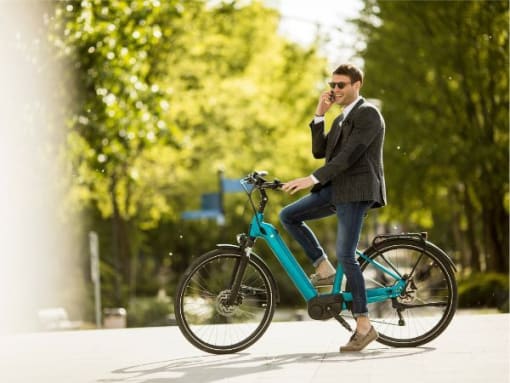E-Powered Bikes And Scooters Provide Many Benefits To Owners, But Pose Risks For Stratas

E-bikes and e-scooters are growing in popularity, as Canadians embrace the outdoors, trade in their cars for eco-friendly options, and are even using these mobility devices to commute to work. In 2022 alone, sales of e-bikes hit 70,000 across the country and continue to reach higher levels.
But behind many of the benefits, a potential challenge is arising for condo corporations due to the increasing frequency that battery-powered mobility devices like e-bikes and e-scooters may catch on fire. These fires can cause serious property damage and, in some cases, have resulted in severe injuries and even deaths.
The problem of fire arises from the use of lithium-ion (Li-ion) batteries, which are incredibly dense to allow to the storage of the energy required to power the device. However, in some cases, they can suffer from thermal runaway, which is an uncontrolled chemical reaction that causes heat and fire. Common causes of these types of fires are overcharging, poor storage conditions, damage to the battery from cracks and impacts, manufacturing defects, and extreme temperatures.
What can an e-bike owner do to prevent fires?
If you are considering buying an e-bike, purchase a recognized brand from a reputable manufacturer and look for the newly developed CAN/UL 2849 standard, which assures consumers that they are making a safe purchase. This standard isn’t currently required in Canada so you may come across other lower quality options that might be of questionable quality.
Once you have bought your bike, it’s important to always ensure safe storage and charging.
To minimize the risk of fire, these simple steps should keep you safe:
- Never modify the bike’s battery system or use aftermarket rapid chargers.
- Don’t substitute batteries that are not designed for or compatible with the bike or scooter.
- Always inspect the battery to look for cracks, leaks, or other damage. Impacts from rocks and other physical damage, such as punctures or dents, could increase the risk of a runaway thermal event.
- Remove the battery from the charger or the bike (if safe to do so), should the battery become hot or produce smoke.
- Store the bike in a well-ventilated area that is protected by sprinklers and smoke detectors.
- Never leave an e-bike or e-scooter on a balcony or anywhere near combustible materials.
- Batteries should not be charged overnight, and a charging battery mustn’t be left unattended.
- For long-term winter storage, batteries should not be stored on a full charge. Instead, ensure the battery is fully drained and stored in a metal cabinet.
Once your battery reaches the end of its life, it should not be disposed of in the garbage. The Recycle Your Batteries, Canada! website has a link that helps to find drop-off locations for safe recycling. Drop-off sites often include bike shops and other retailers that sell e-powered mobility devices.
What steps can condo corporations take to manage the risk from e-bikes?
E-bikes and other mobility devices are new territory for condos and strata corporations, as they come to terms with policies to keep residents safe while recognizing the importance of this new activity.
As e-bikes grow in popularity, condo corporations cannot stop residents from owning them and are best advised to work out practical rules and policies to minimize risk and ensure safety. Each home is likely to have more than one e-bike on the premises. E-bikes are often heavier than regular bikes; moving them through hallways and into elevators presents challenges.
One option is to provide occupants with a safe space to charge and store their e-bikes to minimize risk. However, many residents are reluctant to store an expensive bike anywhere, even in a secure area, for risk of it being stolen. Some buildings have, or are exploring, additional theft prevention measures through the use of security cameras and providing wash areas to avoid letting in dirt and grease into the building as much as possible.
Legal experts also recommend ensuring that bylaws are kept up to date and recognize the risks associated with e-batteries. A key element of the condo corporation’s bylaws is making sure that liability is assigned in case of improper use and storage of batteries.
While the issue around batteries is still evolving, strata corporations need to communicate the risks of battery fires to residents through regular updates such as newsletters and emails. These need to remind residents of best practices and the risks associated with fires.
What should you do if you experience a thermal runaway fire?
If your battery starts to produce smoke or catches on fire, step away from the device and call the fire department immediately. BFL engineers note that Li-ion batteries involve intense heat and cannot be extinguished using a regular fire extinguisher. However, an ABC extinguisher can be used to put out any fire that has spread around the area of the battery fire.
